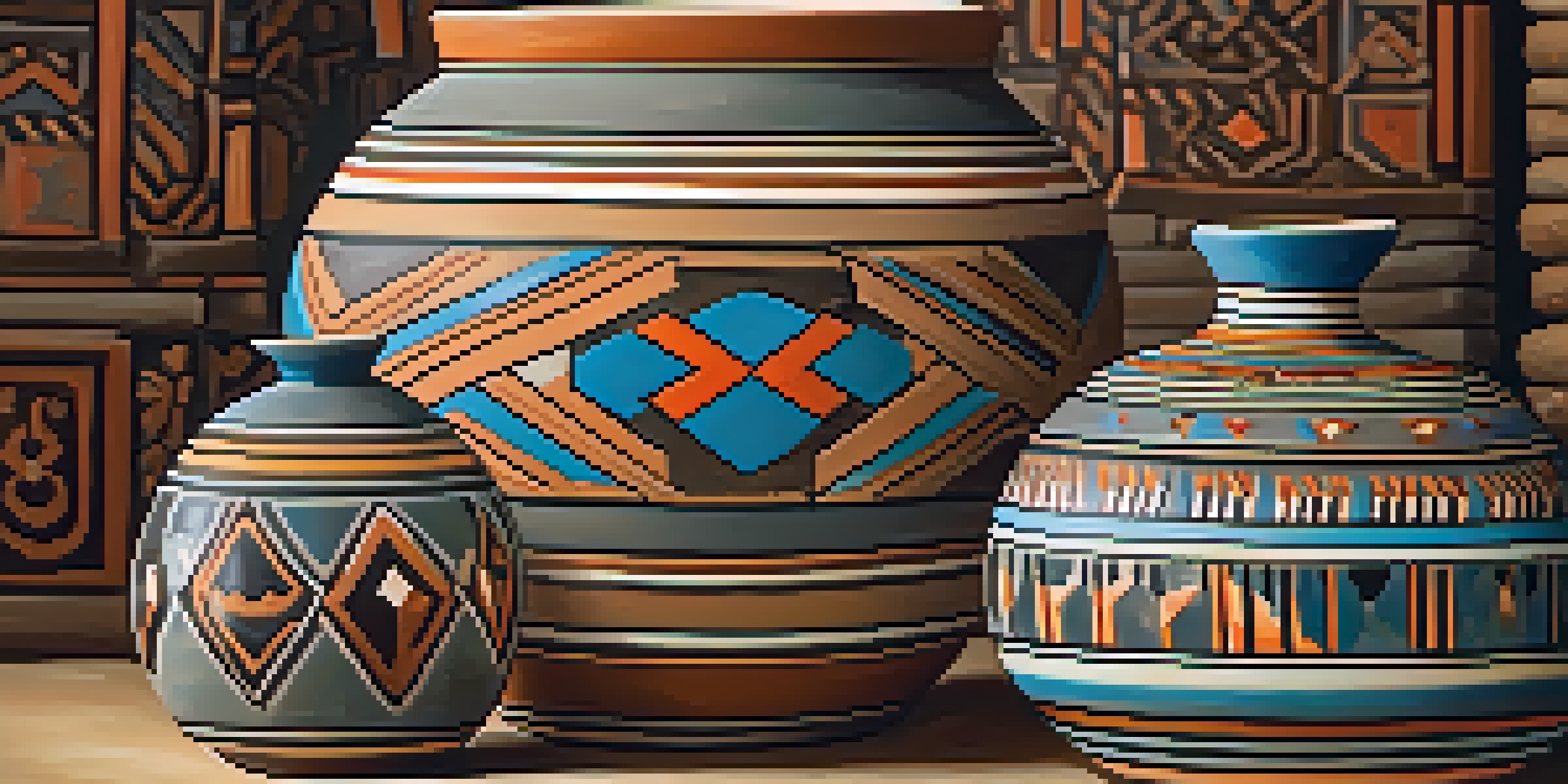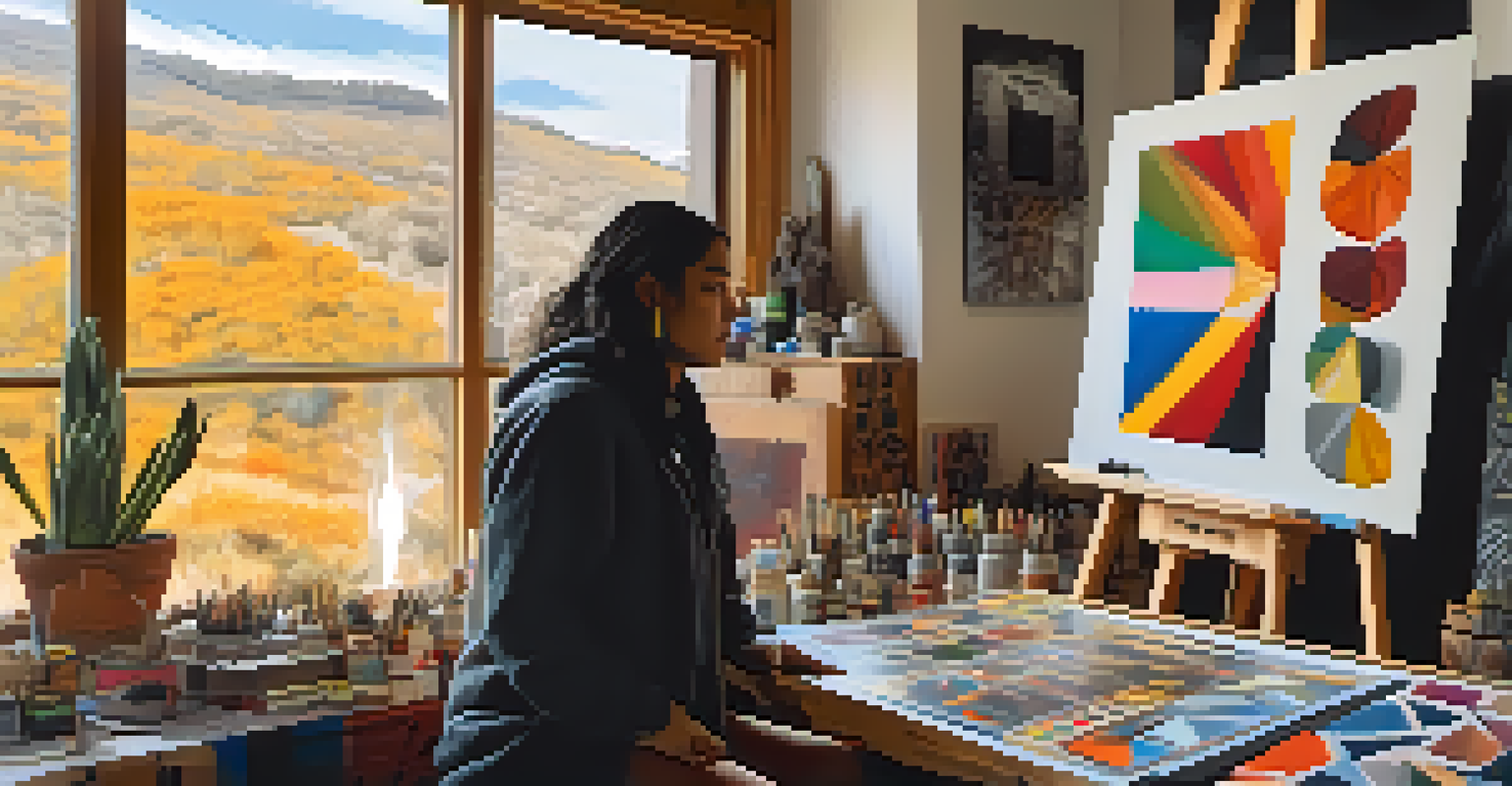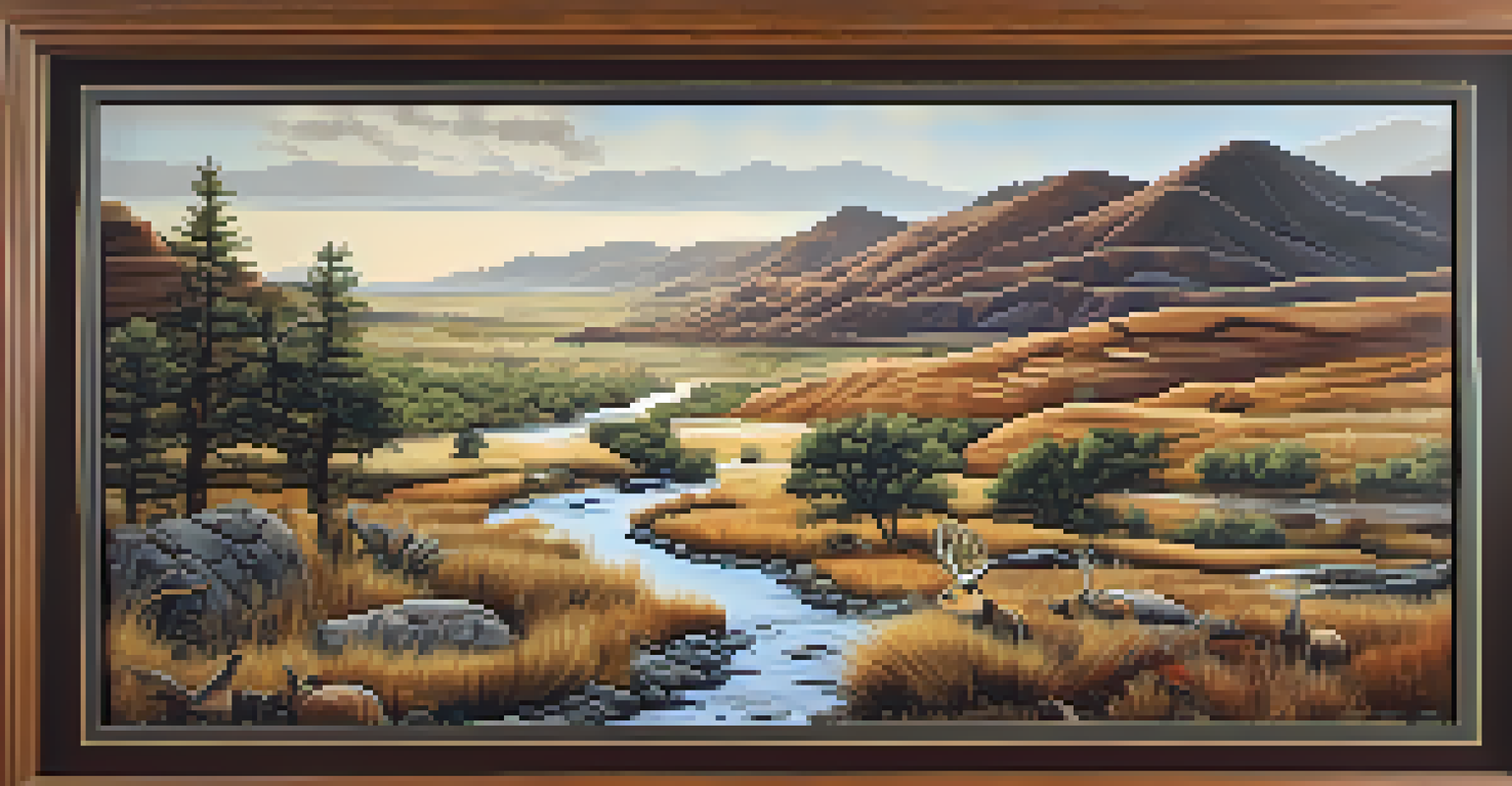Exploring Indigenous Art: Narratives of Native American Cultures

Understanding the Roots of Indigenous Art
Indigenous art is a vibrant expression of culture, history, and identity. Each piece often conveys deep spiritual connections and stories passed down through generations. By examining these artworks, we can uncover the historical contexts that shaped Native American societies.
Art is a way of recognizing and expressing the world around us, a language of the heart that speaks to the spirit.
For instance, traditional pottery and weaving are not merely crafts; they embody the experiences and beliefs of the communities. They reflect not only aesthetic values but also the environment and the resources available to different tribes. This connection to the land is a recurring theme in Indigenous art.
Moreover, these artistic expressions serve as a form of resistance and resilience against colonization. They preserve cultural narratives that may otherwise be lost, demonstrating the power of art in storytelling and identity formation.
Symbolism and Meaning in Native American Art
Symbols play an essential role in Indigenous art, often representing significant aspects of life and spirituality. For example, the eagle is a common motif, symbolizing strength, courage, and a connection to the divine. Understanding these symbols can take us deeper into the cultural significance behind each artwork.

Different tribes have unique symbols, each with its own meanings and stories. This diversity highlights the rich tapestry of Native American cultures and the importance of place in shaping artistic expression. By recognizing these individual narratives, we appreciate the complexity and beauty of Indigenous art.
Cultural Significance of Indigenous Art
Indigenous art serves as a vibrant expression of culture, history, and identity, conveying deep spiritual connections and preserving narratives.
Furthermore, the use of color in artwork is also symbolic. Colors are often chosen for their cultural meanings; for instance, red may symbolize life and vitality, while blue can represent water and healing. These choices create layers of meaning that resonate with both the artist and the viewer.
Traditional vs. Contemporary Indigenous Art
While traditional Indigenous art often reflects time-honored practices and techniques, contemporary Indigenous artists are redefining these forms. They blend ancient methods with modern perspectives, creating a dialogue between past and present. This evolution showcases the dynamic nature of Indigenous cultures.
The purpose of art is not a rarified, intellectual distillate; it is life, intensified, brilliant life.
For example, artists like Jaune Quick-to-See Smith use mixed media to address contemporary issues while honoring traditional themes. Her work challenges stereotypes and invites viewers to engage with Indigenous narratives in new ways. This fusion of styles enriches the art world and promotes greater understanding.
Contemporary Indigenous art also plays a crucial role in activism. Many artists use their platforms to advocate for social justice, environmental protection, and the rights of Indigenous peoples. This commitment to advocacy illustrates how art can inspire change and raise awareness about pressing issues.
The Role of Nature in Indigenous Art
Nature is often a central theme in Indigenous art, reflecting a deep respect for the environment. Many Native American cultures view themselves as stewards of the land, and this perspective is beautifully captured in their artistic expressions. From intricate beadwork to landscape paintings, nature serves as both inspiration and subject.
For instance, the use of natural pigments in painting and dyeing showcases a connection to the earth. Artists often gather materials from their surroundings, creating a sustainable practice that honors their heritage. This relationship with nature is not merely aesthetic but also spiritual, emphasizing interconnectedness.
Symbolism Enhances Artistic Meaning
Symbols and colors in Indigenous art carry significant meanings that reflect spiritual beliefs and cultural narratives across different tribes.
Moreover, Indigenous art often portrays the cycles of nature, illustrating seasonal changes and animal life. These representations serve as reminders of the rhythms of life and the importance of living harmoniously with the environment. Through these artworks, we gain insight into the worldview of Indigenous cultures.
Storytelling Through Indigenous Art
Storytelling is a fundamental aspect of Indigenous cultures, and art serves as a powerful medium for these narratives. Each artwork tells a story, whether it's a depiction of a mythological figure or a representation of daily life. This visual storytelling preserves history and cultural teachings for future generations.
Many artists incorporate traditional stories into their pieces, allowing viewers to engage with the narratives on a deeper level. For example, the use of visual metaphors can evoke emotions and provoke thought, inviting interpretation and discussion. This interactive aspect of art enhances its significance.
Furthermore, storytelling through art fosters community connections. When people gather to create or appreciate art, they share experiences and knowledge, strengthening their cultural bonds. In this way, art becomes a communal activity that celebrates and perpetuates Indigenous identities.
Challenges Facing Indigenous Artists Today
Despite the rich traditions and contemporary innovations, Indigenous artists face numerous challenges. Issues such as cultural appropriation and lack of representation in mainstream galleries can hinder their visibility and impact. It's essential to recognize these barriers to support authentic Indigenous expressions.
Cultural appropriation occurs when non-Indigenous individuals or entities borrow from Indigenous cultures without understanding or respecting the context. This not only dilutes the meaning of the art but can also exploit the cultural heritage of Indigenous peoples. Awareness and education are crucial in addressing this issue.
Challenges for Indigenous Artists
Indigenous artists face challenges such as cultural appropriation and limited access to resources, which impact their visibility and expression.
Additionally, access to resources and platforms for showcasing their work can be limited for many Indigenous artists. Supporting Indigenous art initiatives and galleries is vital to ensuring that these artists receive the recognition they deserve. By advocating for their work, we can help create a more inclusive art world.
The Future of Indigenous Art and Culture
Looking ahead, the future of Indigenous art is vibrant and promising. As more artists gain recognition, they continue to push boundaries and explore new avenues of expression. This evolution not only honors their heritage but also opens doors for dialogue and understanding across cultures.
Educational initiatives that focus on Indigenous art and culture are also on the rise. These programs help bridge gaps in knowledge, fostering appreciation for the rich narratives embedded in the artwork. Through education, we can cultivate a deeper respect for Indigenous perspectives.

Ultimately, the future of Indigenous art lies in collaboration and mutual respect. By supporting Indigenous artists and listening to their stories, we contribute to a more inclusive narrative that celebrates diversity. This journey of exploration enriches not only our understanding of Indigenous cultures but also our shared humanity.